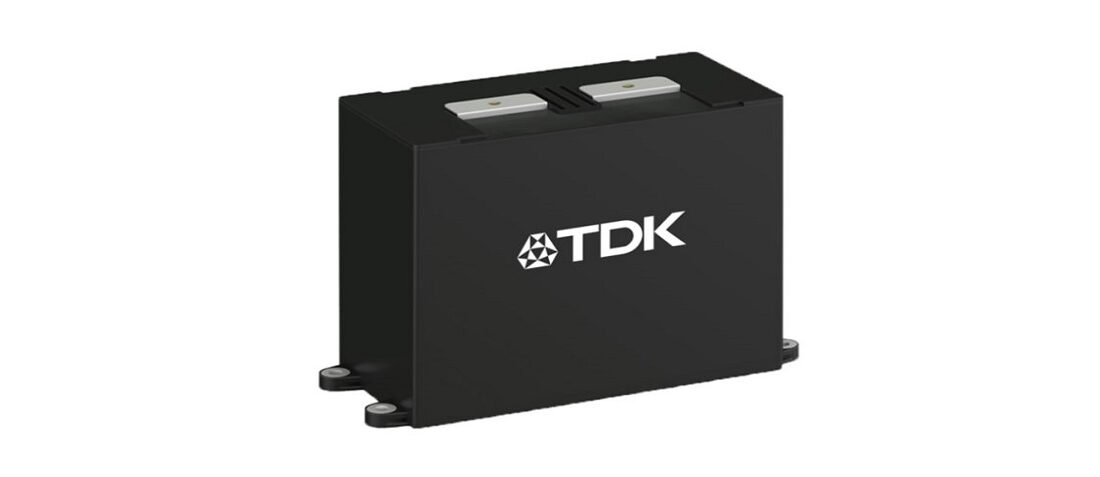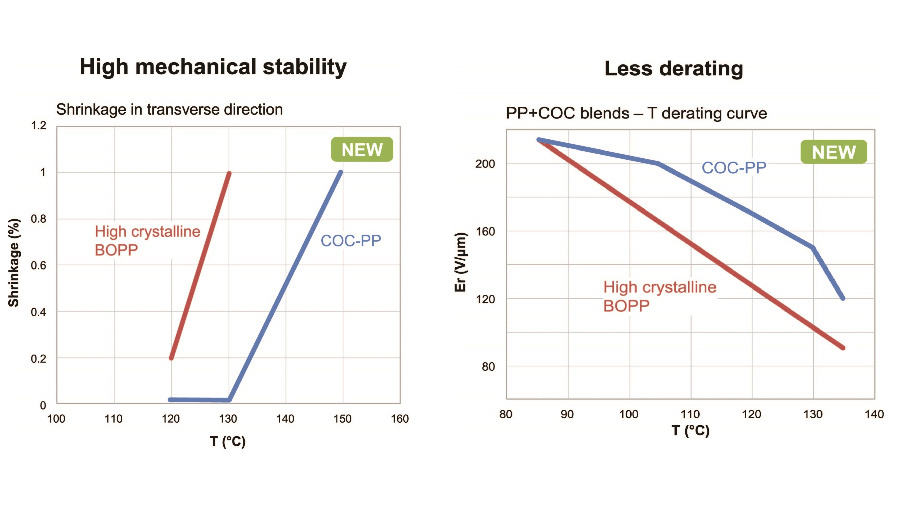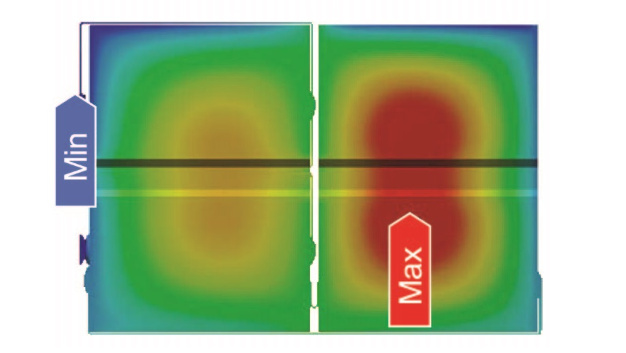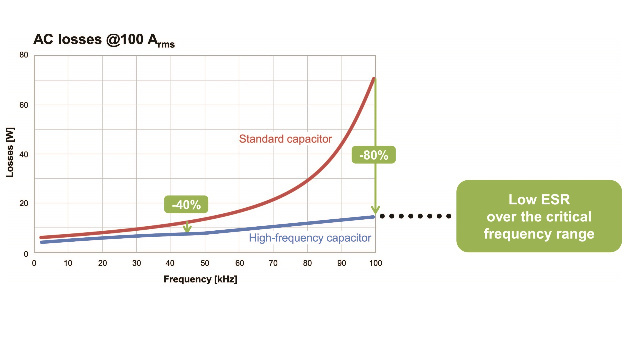
TDK Introduces Special Capacitor Dielectric for SiC and GaN DC Link
- Posted by doEEEt Media Group
- On April 27, 2020
- 0
Power transistors based on gallium nitride and silicon carbide impose very high demands on DC link capacitors. TDK has now developed a dielectric that allows such film capacitors to be used up to +125 °C instead of +105 °C while optimizing their winding structure.
In power electronic applications, wide bandgap (WBG) semiconductor switches based on gallium nitride (GaN) and silicon carbide (SiC) offer a great advantage, as they can be operated with switching frequencies in the range of hundreds of kilohertz. At the same time, they feature steep pulse edges, thereby achieving greater energy efficiency. Due to these high switching frequencies, film capacitors are increasingly being used as DC link capacitors.
In order to minimize the lead lengths, and thus the parasitic inductances, the capacitors are connected directly to the WBG modules by means of busbars. The problem here is that WBG semiconductors are operated with high barrier termination temperatures, which can also be conducted via the busbars to the DC link capacitors. The temperature limit of conventional film capacitors with a dielectric of biaxially oriented polypropylene (BOPP), however, is only +105 °C.
 Figure 1: At temperatures of up to +130 °C the new COC-PP material exhibits no shrinkage in a transverse direction (left). Voltage derating of the new material is also significantly better (right). © TDK
Figure 1: At temperatures of up to +130 °C the new COC-PP material exhibits no shrinkage in a transverse direction (left). Voltage derating of the new material is also significantly better (right). © TDK
A Blend of Two Dielectrics
TDK has developed a dielectric that can also be used continuously at high temperatures. This involves a combination of two basic materials. One component is semi-crystalline polypropylene, which is ideal for processing into films; the other is amorphous cyclic olefin copolymer (COC), which can tolerate high temperatures. The resulting dielectric (COC-PP) can be used at temperatures in excess of +125 °C with considerably lower derating while retaining the good self-healing properties of BOPP. In addition, this enables extremely thin films of just 3 µm to be manufactured. Figure 1 shows the significantly improved shrinking and derating behaviour of COC-PP in comparison with conventional BOPP.
Like all capacitors, film capacitors also feature a complex Impedance, a series connection comprising an ohmic and a capacitive part. Accordingly, this produces a frequency-dependent resistance that increases sharply as the frequencies rise. This rise is essentially caused by inhomogeneous impedances, skin effects and winding geometries, leading to unwanted resonances and electromagnetic effects. The result is a heating of the capacitor.
Figure 2: A frequency of 5 kHz produces a significant inhomogeneous distribution of current, and therefore losses, over both windings. © TDK
This has a particularly negative effect if the internal design of a capacitor consists of several windings. Different internal lead lengths and other factors then lead to a pronounced frequency-dependent current distribution across the individual windings, as shown in Figure 2.
By using CAD and FEA (finite element analysis) simulation software TDK has developed high-frequency power capacitors with an optimized internal design. Even at the high frequencies and temperatures at which wide-bandgap semiconductors are operated, these capacitors offer high performance with low losses, thanks to a minimized ESR (Figure 3).
The new B25640* series of HF power capacitors is especially tailor-made for SiC semiconductors. With rated DC voltages of between 700 V and 2200 V and capacitance values from 370 µF to 2300 µF, the capacitors are suitable for the new generation of converters for traction, industrial drives and renewable energy applications. With the COCPP dielectric the capacitors can also be operated without voltage derating at temperatures of up to +125 °C. One great advantage of the new capacitors is their low ESL value of 10 nH. This means that, even at high, rapidly switched currents, their voltage overshoot remains very low, so that in most cases they even make snubber capacitors unnecessary.
Source: TDK
- Managing EEE components for LEO and lower cost space missions - December 17, 2024
- Filtering Characteristics of Parallel-Connected Fixed Capacitors in LCC-HVDC - November 21, 2024
- ALTER SPACE TEST CENTER: testing approaches for New Space - September 30, 2024



0 comments on TDK Introduces Special Capacitor Dielectric for SiC and GaN DC Link